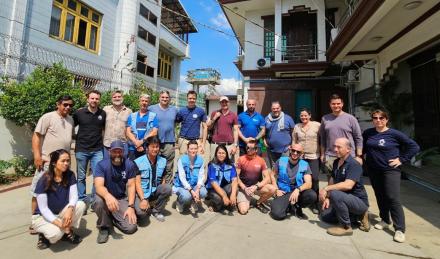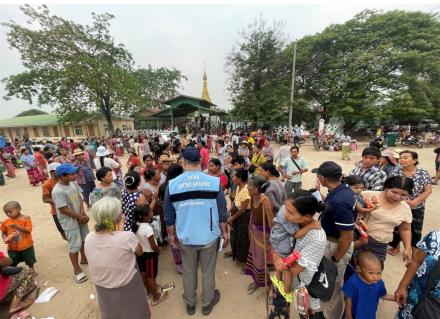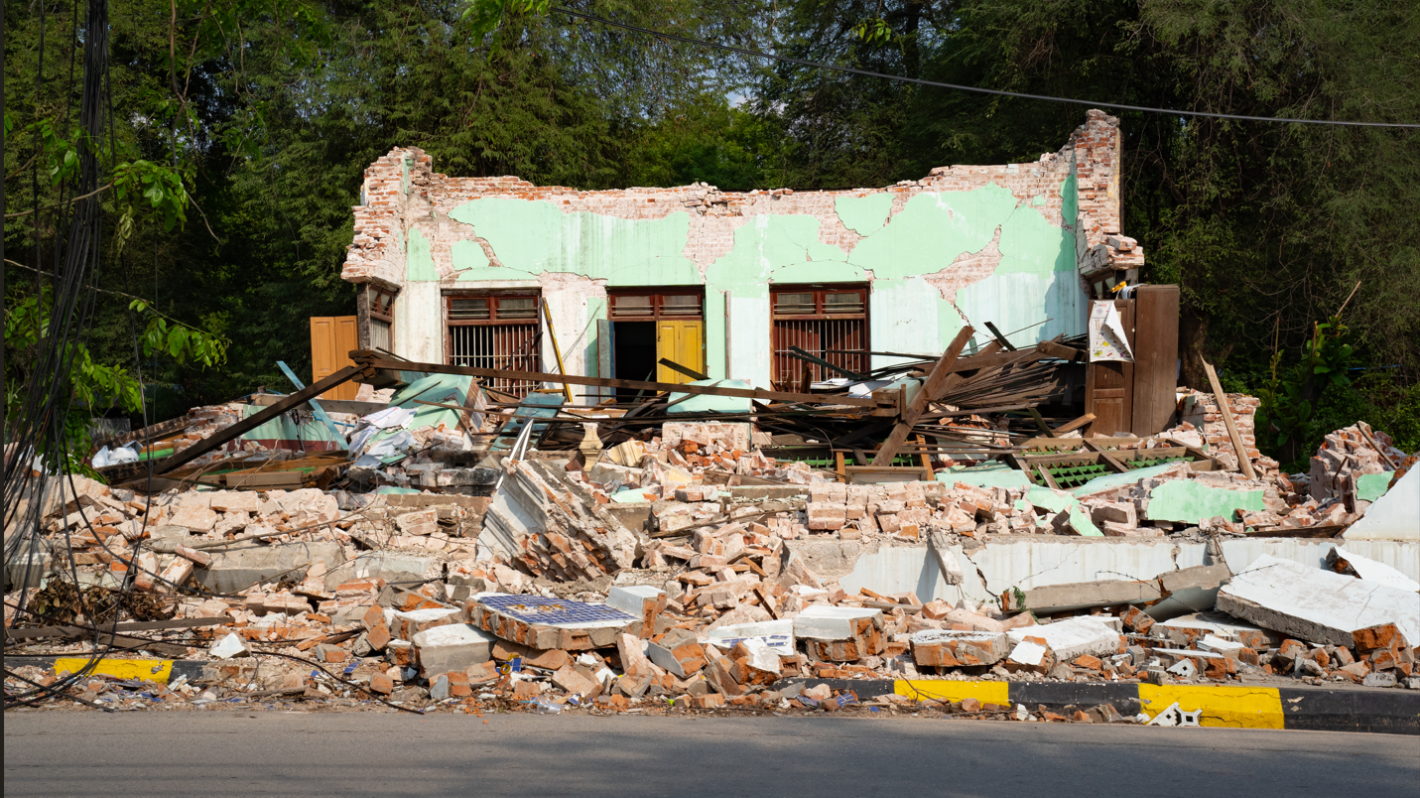Structural damage in Mandalay/ Photo: OCHA
On 28 March 2025, a powerful 7.7 magnitude earthquake struck central Myanmar at approximately 12:50 PM local time, with a shallow epicentre near Mandalay and Sagaing. The tremors, followed minutes later by a 6.4 magnitude quake further south, caused widespread devastation across the country.
Homes, schools, hospitals, and vital infrastructure collapsed, leaving millions displaced and essential services on the brink of collapse. Over 17 million people live in the affected regions, with more than 9.1 million in the hardest-hit areas. At least 6.7 million people are now in urgent need of humanitarian assistance and protection—a sharp rise from pre-earthquake figures.

UNDAC field visit in an informal shelter site for earthquake-affected people/ Photo: OCHA
Even before the disaster, 19.9 million people in Myanmar required aid due to ongoing conflict, climate-related crises, and economic instability. The earthquake and its aftershocks have deepened these needs considerably. In response, the State Administration Council (SAC) declared a state of emergency across key regions and appealed for international assistance on 29 March. The UN Emergency Relief Coordinator released an initial US$5 million for immediate life-saving support.

UNDAC Team in Mandalay/ Photo: OCHA
In light of the situation, OCHA alerted the UNDAC system on 28 March to identify a team to deploy in support of the OCHA Myanmar Country Office in the coordination of the response in the affected areas. A 31-member UNDAC team was deployed, arriving in Myanmar by 5 April. The team includes 15 UNDAC personnel (11 from OCHA), six associated partners (including WHO-EMT, WFP-GLC and SDC Environmental Experts), and 10 operational support partners (TSF, MapAction and Atlas Logistique). The team has been supporting the response under the leadership of OCHA Myanmar, working alongside national and international humanitarian actors. Personnel have been positioned in Yangon, Nay Pyi Taw, and Mandalay to strengthen coordination and support response planning.
Additional surge support has been provided remotely and in person by OCHA’s Regional Office for Asia-Pacific and headquarters branches. The Government of Myanmar has announced that emergency search-and-rescue operations would shift to recovery efforts as of 4 April.

Field assessment in Sagaing/ Photo: OCHA
The United Nations and partners remain committed to supporting the people of Myanmar through this crisis, and call for sustained international solidarity to meet growing humanitarian needs.

